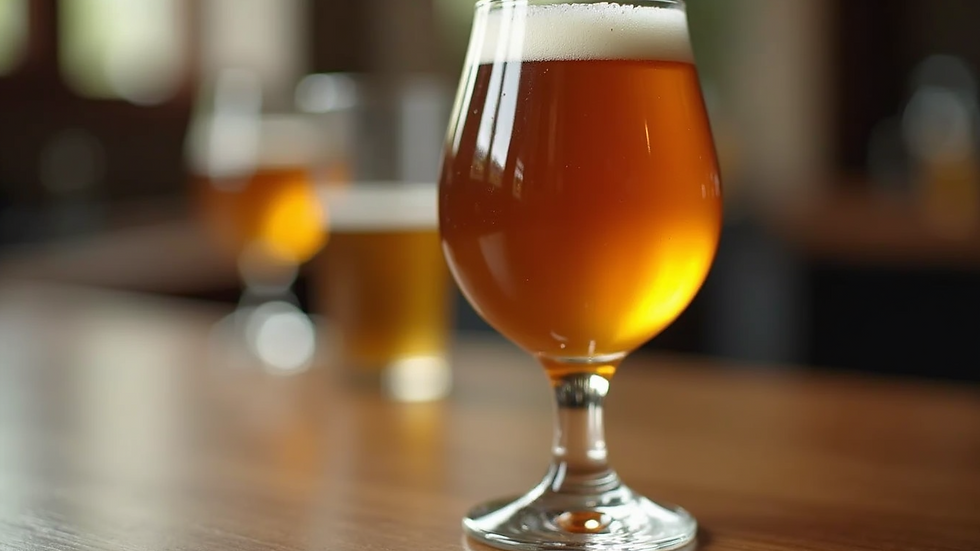Exploring Authentic Belgian Beer Styles
- accounts5539
- Aug 20
- 4 min read
Belgium is renowned worldwide for its rich beer culture and diverse brewing traditions. From fruity and sour to strong and malty, Belgian beers offer a unique experience for beer lovers. This guide will take you through some of the most authentic Belgian beer styles, explaining their characteristics, origins, and what makes them so special. Whether you are a seasoned beer enthusiast or just starting to explore, this post will help you appreciate the depth and variety of Belgian brews.
Belgian Beer Styles Guide: An Overview of Classic Varieties
Belgian beers are known for their complexity and variety. Here are some of the most iconic styles you should know:
1. Belgian Blonde Ale
This style is light in color and has a smooth, slightly sweet taste with hints of fruit and spice. It typically has an alcohol content around 6-7%. Belgian Blonde Ales are easy to drink and pair well with a variety of foods, making them a great introduction to Belgian beers.
2. Dubbel
Dubbel is a darker, maltier beer with rich caramel and dark fruit flavors like raisins and plums. It usually has an alcohol content between 6-8%. This style originated in Trappist monasteries and is known for its deep, complex taste.
3. Tripel
Tripels are strong, pale ales with a higher alcohol content, often around 8-10%. They are characterized by a spicy, fruity aroma and a dry finish. The balance of sweetness and bitterness makes Tripels a favorite among those who enjoy bold flavors.
4. Saison
Saison, or farmhouse ale, is a refreshing, slightly tart beer with a peppery and citrusy profile. Traditionally brewed in the summer months, it has a moderate alcohol level (5-7%) and is highly carbonated. Saisons are perfect for warm weather and pair well with light dishes.
5. Lambic and Gueuze
These are spontaneously fermented beers, meaning they rely on wild yeast and bacteria from the environment. Lambics are often sour and funky, with flavors of green apple, barnyard, and earthiness. Gueuze is a blend of young and old Lambics, resulting in a sparkling, complex beer with a dry, tart finish.

What Makes Beer Belgian Style?
Belgian beer styles are distinct because of several key factors that set them apart from other brewing traditions:
Unique Yeast Strains
Belgian brewers use special yeast strains that produce complex esters and phenols. These compounds give Belgian beers their characteristic fruity, spicy, and sometimes funky flavors.
Traditional Brewing Techniques
Many Belgian beers are brewed using age-old methods, including bottle conditioning, where beer undergoes a secondary fermentation in the bottle. This process enhances carbonation and flavor development.
Use of Specialty Ingredients
Belgian brewers often add unique ingredients such as coriander, orange peel, and various spices. These additions contribute to the distinctive taste profiles of many Belgian beers.
Monastic Brewing Heritage
Trappist and Abbey beers are a significant part of Belgian beer culture. Monks have been brewing beer for centuries, focusing on quality and tradition. Their recipes and brewing methods have influenced many Belgian beer styles.
Emphasis on Balance and Complexity
Belgian beers are known for their balance between sweetness, bitterness, acidity, and alcohol warmth. This complexity makes them interesting and enjoyable to savor slowly.

Popular Belgian Beer Styles and Their Food Pairings
Pairing Belgian beers with food can elevate your tasting experience. Here are some classic pairings:
Belgian Blonde Ale: Pairs well with grilled chicken, seafood, and mild cheeses.
Dubbel: Complements roasted meats, stews, and aged cheeses.
Tripel: Goes great with spicy dishes, shellfish, and creamy desserts.
Saison: Matches well with salads, goat cheese, and light pasta dishes.
Lambic and Gueuze: Ideal with sharp cheeses, charcuterie, and fruit-based desserts.
When tasting, try to notice how the beer’s flavors interact with the food. The carbonation and acidity in many Belgian beers help cleanse the palate, making each bite more enjoyable.
How to Enjoy Belgian Beer Styles at Home
To fully appreciate Belgian beers, consider these tips:
Use the Right Glassware
Belgian beers are often served in specific glass shapes designed to enhance aroma and flavor. For example, a tulip glass is perfect for Tripels, while a wide-mouthed glass suits Dubbels.
Serve at the Proper Temperature
Most Belgian beers are best enjoyed slightly cooler than room temperature, around 45-55°F (7-13°C). This allows the complex flavors to shine without being muted by cold.
Pour Carefully
Pour the beer slowly at an angle to preserve the carbonation and create a nice head. This also releases the beer’s aromas.
Take Your Time
Belgian beers are meant to be savored. Sip slowly and try to identify the different flavor notes.
Explore Variety
Don’t hesitate to try lesser-known Belgian styles like Flanders Red Ale or Belgian Dark Strong Ale. Each offers a unique taste experience.

Discover More About Belgian Beer Styles
Belgian beer culture is vast and fascinating. For those eager to dive deeper, exploring the history, brewing methods, and regional variations can be very rewarding. To learn more about the different belgian beer styles, their origins, and tasting notes, visiting specialized beer schools or breweries can provide hands-on experience and expert insights.
Belgian beers are not just drinks; they are a celebration of tradition, craftsmanship, and flavor. Whether you prefer something light and refreshing or dark and complex, there is a Belgian beer style waiting to delight your palate.
Enjoy your journey into the world of Belgian beers!



Comments